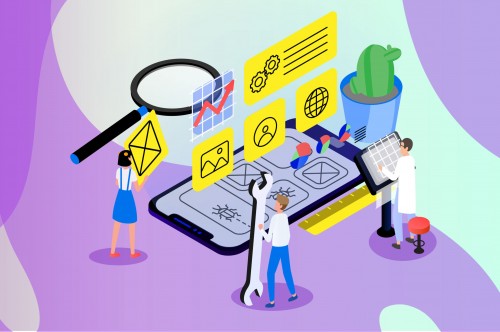Best Source for B2B Industry Trends, News and Updates

What do you know about the buying cycle? It refers to the entire process a customer goes through to purchase a product or service. This includes learning about the products, finding potential sellers, and finalizing the purchasing decision at the end. As a marketer employed within the B2B sector, you need to realize that the buying cycles evolve over time.

Making relevant changes to cater to such alterations is essential if you want to keep generating leads. There was a time when sales associates had to attend to the buyers, providing them with all the information they needed regarding the portal’s services, products, etc. However, the role of B2B representatives seems to have been receded as buyers nowadays prefer to do the research themselves.
Research suggests that up to 60% of the buyers contact a foreign trade B2B platform when they are figuring out which marketplace to select, instead of during the learning stage. Are you wondering why this has happened? Today’s B2B buyers are highly aware of the market due to technological advancements. They can look for the products, find potential sellers, compare prices, weigh the benefits and drawbacks, and do a lot more through the internet without requiring any assistance from a B2B salesperson.

If you are still a bit confused, answer the following question. What would you do before buying a new car? I am sure that you would surf the web to look for vehicles that fall within your budget, compare prices, and check brands before visiting a dealership. Today’s B2B buyers enjoy the same self-learning experience. There are still a few of those who fully rely on the B2B sales representatives for guidance, just not as much as there were in the past.
If you want to accompany the B2B buyers in their buying journey in a digitalized world, here are a few guidelines to follow;
A B2B buyer is looking for feasible solutions more than the products. What you need to do is make them realize the significance of what your platform is offering. How do you execute this strategy? You can write blogs, upload videos on relevant channels, and interact with them on social media. This is about making them aware that you understand their problems and have the right tools to solve them.

Before you begin to understand a buyer’s journey which leads them to finalize a purchase, it is vital to identify your target audience. Study the market and conduct thorough research to see who is likely to avail the services or products your marketplace offers. Create specific buyer personas, and then take a deep dive into the lives of your prospects. This will involve answering questions like what mediums does your target audience utilize to learn about products/services and find sellers. Once you have ticked all the boxes and gathered useful data regarding your potential buyers, tailoring the digital marketing strategies accordingly becomes easier.

Earlier it was mentioned that the majority of the buyers get in touch with a marketplace’s sales representatives after completing the research. While the prospects are not contacting your sales associates, in the beginning, they are still visiting the business website to educate themselves. Therefore, add engaging yet informative content to the online website. Enhance the visitor’s experience in any way possible to make sure they return to purchase or at least enquire more. Answer the questions that could be bothering them to enforce a sense of realization that your business actually cares about their needs.

There are two types of buyers; one that is interested in purchasing the products sold by the sellers on your foreign trade B2B platform. The second is who wants to avail the services offered by the marketplace. What you need to do is tackle both of these types in an adequate manner using proper channels. Regardless, putting out personalized content is recommended. Although most buyers share similarities, adding a bit of personal touch is likely to boost sales and contribute to sustainable growth.

There are a lot of reasons to explain why a buyer delay their purchases. However, if you are capable of creating urgency, buyers may take action quickly. This includes offering incentives with time limits, discounted deals, etc. Experts suggest using chatbots to influence a buyer’s decision. Chatbots on websites allow businesses to have a one-on-one discussion with their prospects, making them feel heard and valued. An instant response to the client’s concerns is generated, eliminating the communication gap and giving a notable boost to the finalization of favorable agreements.

There was a time when personalization was only witnessed in a B2C model. However, things have drastically changed as individualized digital experiences continue to take over the B2B sector. This has happened due to Artificial Intelligence (AI) and ERP (enterprise resource planning) integration, as these are tools that evolve to get better as well as smarter. They are capable of adjusting as per the buyers’ preferences and suggesting the best option available by considering the prospects’ history.
The primary idea behind all of this is to make things easier for the buyers by simplifying their journey. Adjust your marketing tactics to meet the buyers’ expectations, and you are good to go. You need to be wary of one factor; your strategies require constant monitoring, alterations, and evaluations. A B2B eCommerce marketplace or any type of trading platform that succeeds in improving their sales and profits does everything discussed above.

If you haven’t noticed, a lot of strategies that many believe to be limited to B2C are being adopted within the B2B industry. While it makes sense, recognizing the endless possibilities of changing the techniques your portal resorts to as necessary proves highly worthwhile. The leading foreign trade B2B platforms, such as Alibaba and TradeWheel, follows the same model, enabling them to satisfy the ever-changing demands of millions of buyers and sellers across the globe.